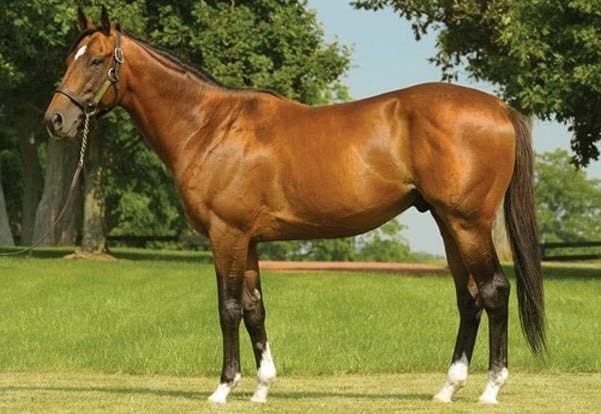Calabrese Horse is an ancient and distinctive breed originating from the Calabria region in southern Italy.
Known for its versatility, strength, and elegance, the Calabrese Horse has played a significant role in the region’s agriculture, transport, and equestrian sports for centuries. Though the breed faced challenges in the 20th century, efforts to preserve and promote the Calabrese Horse have been ongoing.
History and Development:
The Calabrese Horse has deep historical roots in the Calabria region of southern Italy. It is believed that the breed developed over centuries, with influences from various ancient breeds brought to Italy by invaders and traders. The Calabrese Horse was initially used as a warhorse and cavalry mount due to its strength and agility. Over time, the breed became highly valued for agricultural work, particularly in the challenging mountainous terrain of Calabria.
The Calabrese was often used for pulling carts, plowing fields, and carrying heavy loads. Its versatile nature allowed it to excel in various roles, from farm work to serving as a reliable mount for rural communities. The breed was also known for participating in traditional festivals and cultural events in the Calabria region.
Physical Characteristics:
The Calabrese Horse is a medium-sized, muscular horse that stands between 14.2 and 15.2 hands high (58 to 62 inches). It has a compact, well-proportioned body, ideal for strength and stamina, which allows it to handle tough physical tasks. The breed’s coat is typically bay, chestnut, or gray, though other colors can occasionally appear.
The horse has strong, sturdy legs and hooves, making it particularly suited for the rugged terrain of southern Italy. Its head is refined with a straight profile, and the eyes are large, giving it an alert, intelligent expression.

Key Features of the Calabrese Horse:
| Feature | Details |
|---|---|
| Origin | Calabria region, southern Italy. |
| Height | Typically stands between 14.2 and 15.2 hands high (58 to 62 inches at the shoulder). |
| Coat Colors | Common colors include bay, chestnut, and gray, though other colors may occur. |
| Body Type | Strong, muscular, with a well-proportioned, compact body ideal for working. |
| Temperament | Calm, intelligent, and docile, known for its strong work ethic. |
| Endurance | Known for stamina, able to work for long hours in various conditions. |
| Strength | Highly capable of heavy draft work, including plowing, carrying loads, and pulling carts. |
| Training | Intelligent and easy to train, excelling in various equestrian disciplines, including dressage and jumping. |
| Cultural Significance | Associated with traditional farming, agriculture, and local festivals in Calabria. |
| Historical Use | Used for agricultural work, transport, and as cavalry horses in wars. |
| Conservation Efforts | Ongoing efforts to preserve the breed due to modern mechanization. |
| Current Role | Used for rural agricultural tasks, equestrian sports, and traditional festivals. |
Temperament and Training:
The Calabrese Horse is known for its calm and docile temperament. These horses are highly trainable, making them ideal for a variety of equestrian activities, including dressage, jumping, and driving. Their intelligence and strong work ethic also make them dependable and versatile in agricultural tasks.
Despite their strength, Calabrese Horses are generally very cooperative and patient, which makes them easy to handle, even by novice riders. Their loyal nature and willingness to work make them highly valued by the people of Calabria.
Current Role and Preservation Efforts:
With the advent of modern machinery and mechanized farming, the role of the Calabrese Horse in agriculture has diminished over the years. However, the breed still holds cultural and agricultural significance in southern Italy. Many horses are still used in traditional farming and rural tasks, particularly in the mountainous regions where machines may struggle to access. The breed also plays a role in regional festivals, where they are featured in parades and cultural events, celebrating Calabria’s rural heritage.
Due to its limited use in modern agriculture, the Calabrese Horse faced a decline in population, but conservation efforts have been made to preserve and protect the breed. Breeders are working to maintain the purity of the breed, and associations exist to promote awareness about the Calabrese Horse’s importance in Italy’s agricultural history.

